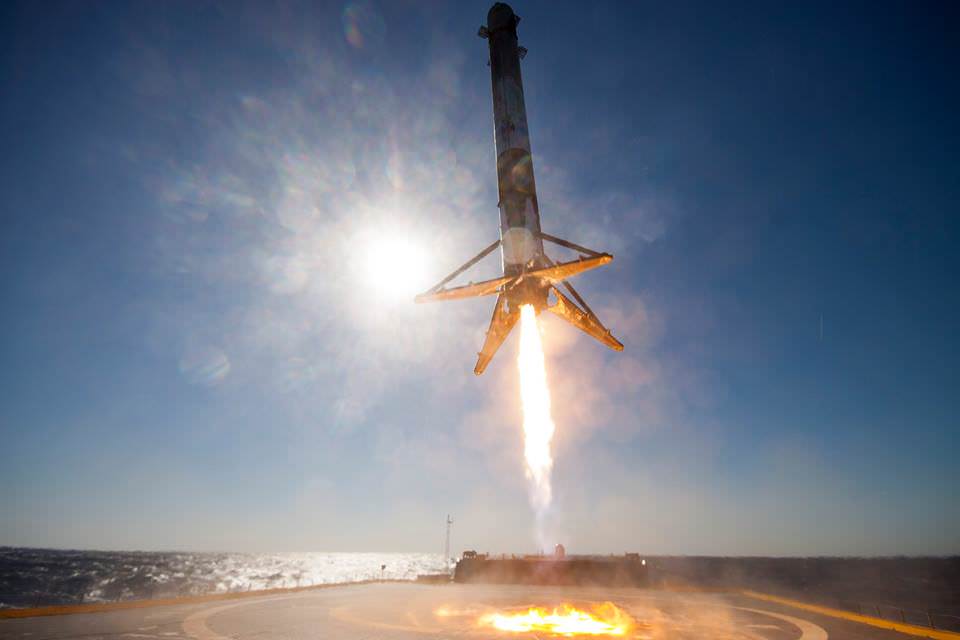
SpaceX has released a slew of up close photos showing the sensational “super smooth” touchdown last week of a Falcon 9 booster on a tiny droneship at sea located several hundred miles (km) off the East coast of Florida.
“This time it really went super smooth,” Hans Koenigsmann, SpaceX VP of Flight Reliability, told Universe Today at the NorthEast Astronomy and Space Forum (NEAF) held in Suffern, NY. “The rest is history almost.”
The dramatic propulsive descent and soft landing of the SpaceX Falcon 9 first stage took place last Friday, April 8 about 9 minutes after blasting off from Cape Canaveral Air Force Station at 4:43 p.m. EDT on the Dragon CRS-8 resupply mission for NASA to the International Space Station (ISS).
The breathtaking new photos show the boosters central Merlin 1D engine refiring to propulsively slow the first stage descent with all four landing legs unfurled and locked in place at the bottom and all four grid fins deployed at the top.
Why did it all go so well, comparing this landing to the prior attempts? Basically the return trajectory was less challenging due to the nature of the NASA payload and launch trajectory.
“We were more confident about this droneship landing,” Koenigsmann said at NEAF.
“I knew the trajectory we had [for CRS-8] was more benign, although not super benign. But certainly benigner than for what we had before on the SES-9 mission, the previous one. The [droneship] landing trajectory we had for the previous one on SES-9 was really challenging.”
“This one was relatively benign. It was really maybe as benign as for the Orbcomm launch [in December 2015] where we had the land landing.”
Read my Orbcomm story here about history’s first ever successful land landing of a spent SpaceX Falcon 9 booster.

The diminutive ocean landing platform measures only about 170 ft × 300 ft (52 m × 91 m). SpaceX formally dubs it an ‘Autonomous Spaceport Drone Ship’ or ASDS.
The ocean going ship is named “Of Course I Still Love You” after a starship from a novel written by Iain M. Banks.
It was stationed some 200 miles off shore of Cape Canaveral, Florida surrounded by the vastness of the Atlantic Ocean.

“The CRS-8 launch was one of the easiest ones we ever had.”
The revolutionary rocket recovery event counts as the first successful droneship landing of a rocket in history and is paving the way towards eventual rocket recycling aimed at dramatically slashing the cost of access to space.
The final moments of the 15 story tall boosters approach and hover landing was captured up close in stunning high resolution imagery recorded by multiple remote cameras set up right on the ocean going platform by SpaceX photographer Ben Cooper.
Landing the booster on land rather than at sea was actually an option this time around. But SpaceX managers wanted to try and nail a platform at sea landing to learn more and validate their calculations and projections.
“As Elon Musk said at the post-landing press conference of Friday, we could have actually come back to land- to land this one on land,” Koenigsmann elaborated.
“But we decided to land on the drone ship first to make sure that on the droneship we had worked everything out!”
“And that’s exactly what happened. So I felt this was only going out a little bit on the limb,” but not too much.”

Before the CRS-8 launch, Koenigsmann had rated the chances of a successful landing recovery rather high.
Three previous attempts by SpaceX to land on a droneship at sea were partially successful, as the stage made a pinpoint flyback to the tiny droneship, but it either hit too hard or tipped over in the final moments when a landing leg failed to fully deploy or lock in place.
“Everything went perfect with the launch,” Koengismann said. “We just still have to do the post launch data review.”
“I am really glad this went well.”
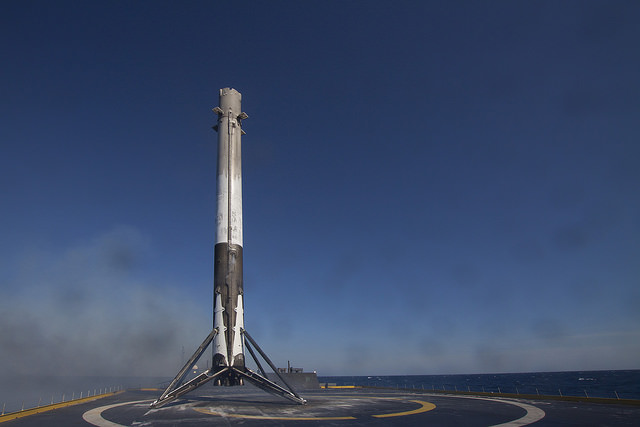
This recovered Falcon 9 booster finally arrived back into Port Canaveral, Florida four days later in the early morning hours of Tuesday, April 12 at about 1:30 a.m. EDT.
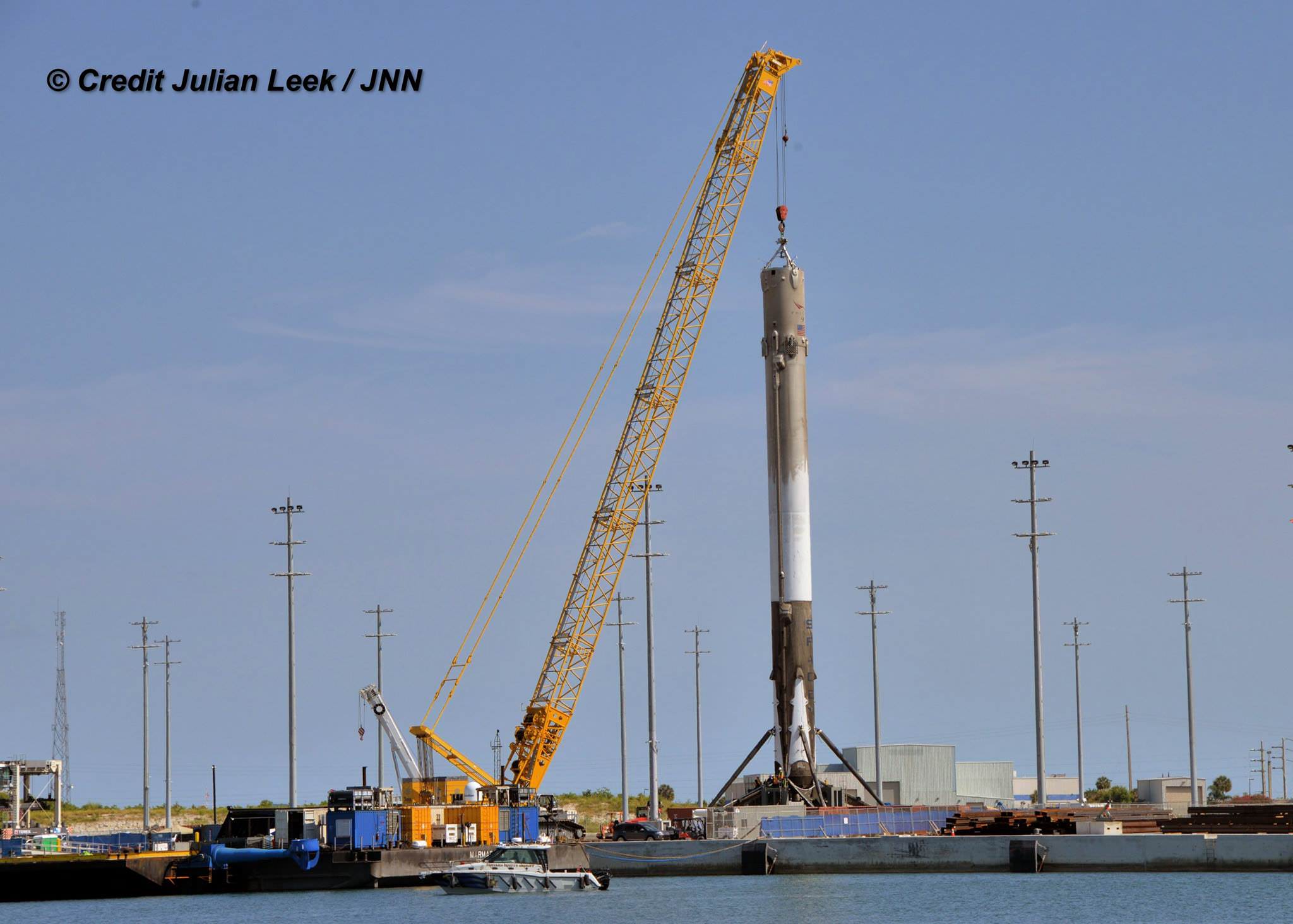
The primary goal of the Falcon 9 launch on April 8 was carrying the SpaceX Dragon CRS-8 cargo freighter to low Earth orbit on a commercial resupply delivery mission for NASA to the International Space Station (ISS).
Dragon arrived at the station on Sunday, April 10, loaded with 3 tons of supplies, science experiments and the BEAM experimental expandable module.
Landing on the barge was a secondary goal of SpaceX and not part of the primary mission for NASA.
Watch this launch video from my video camera placed at the pad:
Video Caption: Spectacular blastoff of SpaceX Falcon 9 rocket carrying Dragon CRS-8 cargo freighter bound for the International Space Station (ISS) from Space Launch Complex 40 on Cape Canaveral Air Force Station, FL at 4:43 p.m. EST on April 8, 2016. Up close movie captured by Mobius remote video camera placed at launch pad. Credit: Ken Kremer/kenkremer.com
The recovered booster will be cleaned and defueled, says SpaceX spokesman John Taylor.
SpaceX engineers will conduct a series of 12 test firings to ensure all is well operationally and that the booster can be re-launched.
SpaceX hopes to refly the recovered booster in a few months, perhaps as early as this summer.

Stay tuned here for Ken’s continuing Earth and planetary science and human spaceflight news.
………….
Learn more about SpaceX, NASA Mars rovers, Orion, SLS, ISS, Orbital ATK, ULA, Boeing, Space Taxis, NASA missions and more at Ken’s upcoming outreach events:
Apr 17: “NASA and the Road to Mars Human Spaceflight programs”- 1:30 PM at Washington Crossing State Park, Nature Center, Titusville, NJ – http://www.state.nj.us/dep/parksandforests/parks/washcros.html
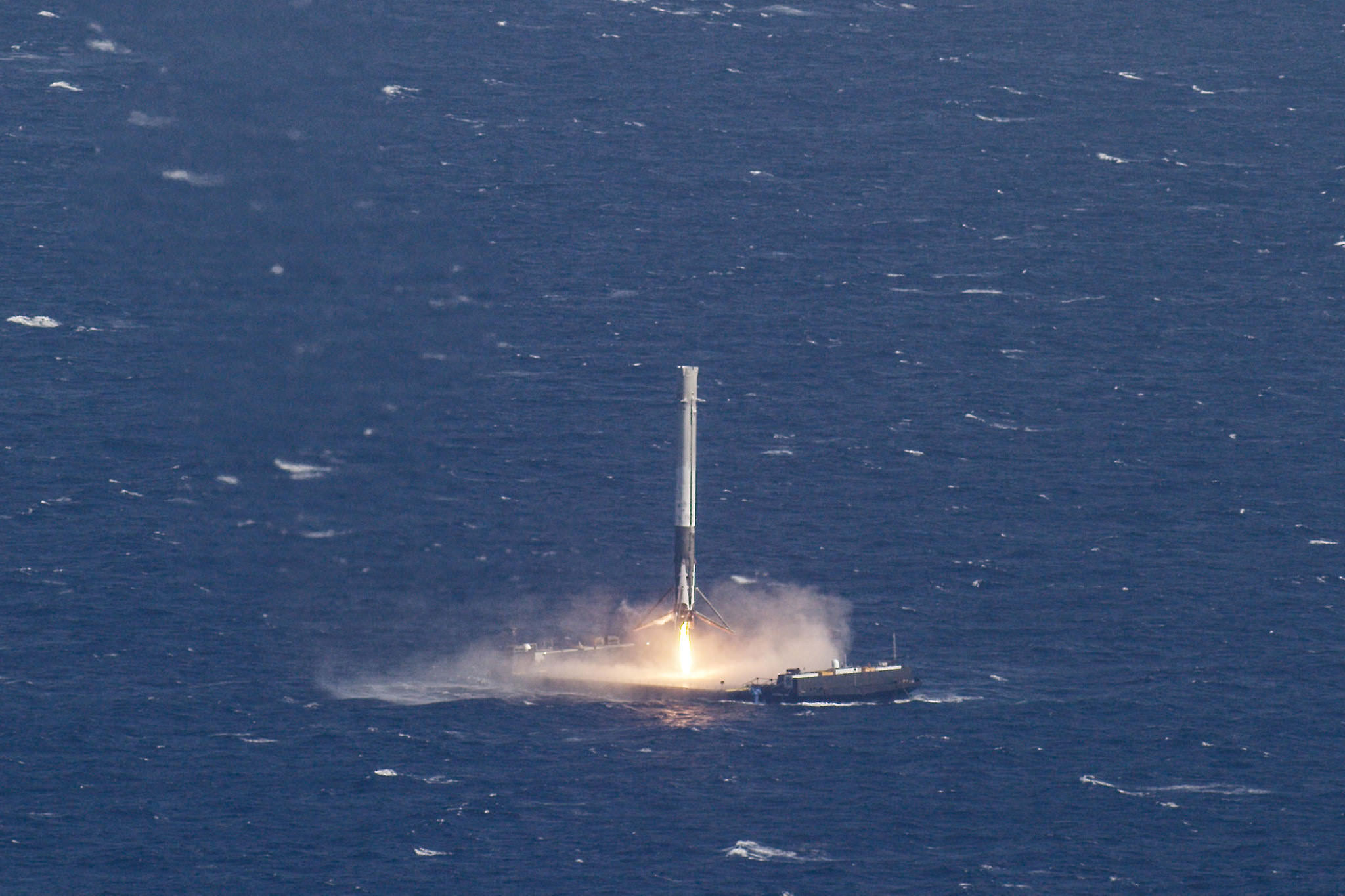
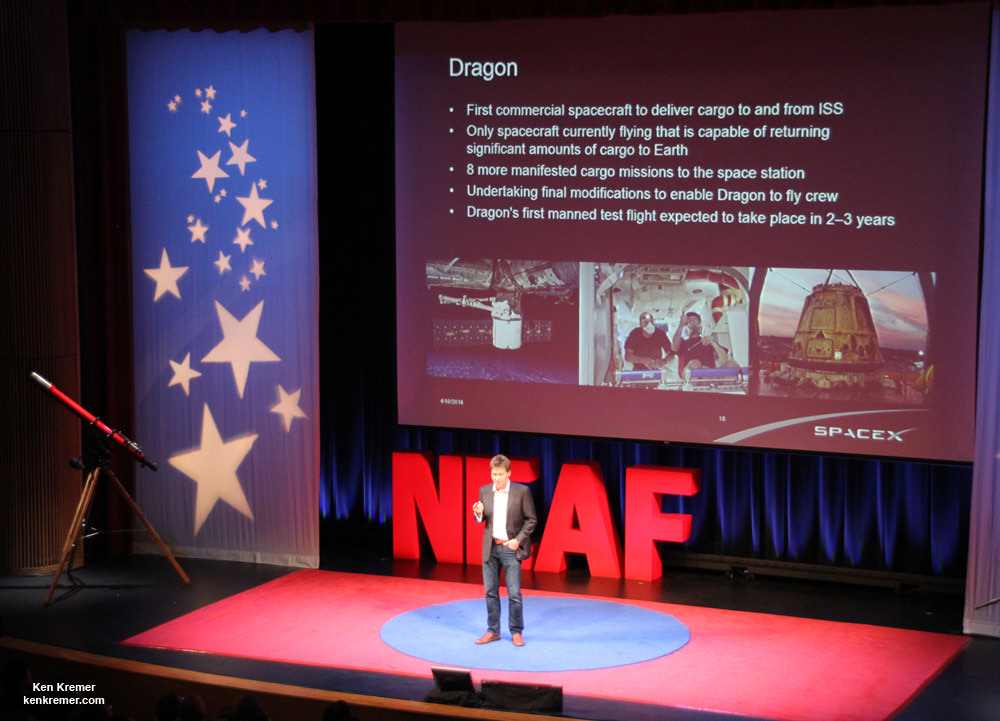

You need a new server. I had a helluva time connecting just to find no video of the landing. Dump WordPress.
Ditto… I have had nothing but trouble from Word Press too. Logging in is a hassle, leaving a comment another hassle…
Symptoms: I have to reload the page to get the comments box to work after logging in. Then, when I post a comment another reload is required to see the post. Round and round she goes. Also, and this may be key(?), after I submit a comment I get a message that basically says – Duplicate comment detected; it looks as though you’ve already said that!
Considering the work around to post… I’ll bet readership has dropped?
YES! I’m still getting ‘tingles’ when I see that landing. It’s not every day you see history being made! Although with SpaceX, once or twice a month seems to work just fine…